Understanding the significance of volatility indicators can be a game-changer for traders navigating the complexities of financial markets.
The top 10 tips on the importance of these indicators delve into nuanced strategies that can potentially optimize trading performance and risk management.
By grasping these key insights, traders can unlock a competitive edge that may lead to more informed decision-making and improved outcomes in the ever-evolving landscape of trading.
Importance of Volatility Indicators
Volatility indicators play a crucial role in the financial markets by providing traders with essential insights into market stability and potential price fluctuations. These indicators are instrumental in assessing and managing risk in trading activities, guiding traders in making informed decisions for both long and short positions.
By categorizing volatility into low and high levels, these indicators help traders identify low-risk trading opportunities while also aiding in determining optimal entry and exit points for trades. This strategic use of volatility indicators assists in optimizing trading strategies, ultimately leading to improved trading performance and better investment outcomes.
Traders who harness the power of volatility indicators are able to enhance their timing for trade executions, maximizing profitability and minimizing potential losses. In conclusion, incorporating volatility indicators into trading practices is essential for navigating the dynamic market environment and achieving success in the realm of investments.
Understanding Volatility Indicator Signals
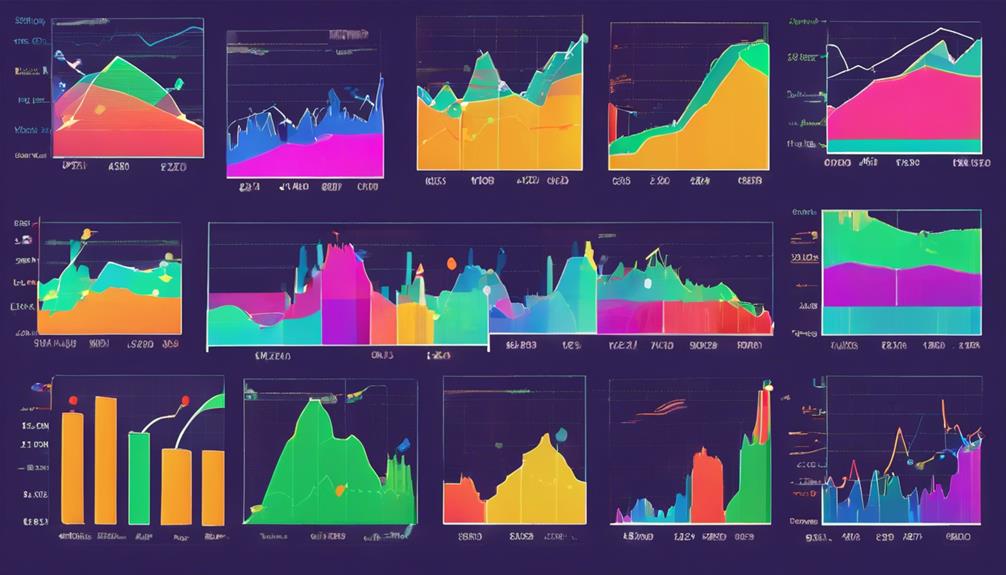
Interpreting signals from volatility indicators is crucial for traders to make informed decisions.
By analyzing market behavior through these signals, investors can better understand the dynamics of price movements.
Assessing the impact of volatility on trading strategies allows for more effective risk management and position adjustments.
Signal Interpretation Tips
When analyzing volatility indicator signals, it is imperative to closely monitor the behavior of various technical tools such as Bollinger Bands, ATR, VIX, Keltner Channels, and Donchian Channels to gauge market fluctuations accurately.
- Bollinger Bands: Signal high volatility when the bands widen and low volatility when they contract.
- ATR values: Above average values indicate increased volatility, prompting adjustments in risk management strategies.
- VIX levels: Levels above 20 suggest higher market volatility and potential declines in stock prices.
Understanding these indicators aids in signal interpretation, enabling traders to make informed decisions regarding risk management strategies and trend identification.
Market Behavior Analysis
To gain a comprehensive understanding of market behavior, it is essential to analyze the signals provided by various volatility indicators. These include Bollinger Bands, ATR, VIX, Keltner Channels, and Donchian Channels. These technical analysis tools play a crucial role in helping traders identify market trends, volatile market conditions, and potential trading strategies.
By comparing the signals from these indicators, traders can identify overbought and oversold conditions, which are essential for making informed trading decisions. For instance, Bollinger Bands assist in identifying potential breakouts, while ATR measures price movement volatility to set effective stop-loss orders.
Understanding the signals from Keltner Channels can help traders determine trends and potential reversals, whereas Donchian Channels track support and resistance levels, aiding in identifying breakout opportunities.
Volatility Impact Assessment
An in-depth analysis of volatility indicator signals is paramount for assessing the impact of volatility on market dynamics and optimizing trading strategies. Understanding volatility indicators helps assess market stability, anticipate price movements, and adjust trading strategies effectively.
Different volatility indicators provide valuable insights into trends, breakouts, and reversals, enabling traders to make informed decisions. Volatility impact assessment plays a crucial role in guiding entry and exit decisions, leading to optimal trading outcomes.
Utilizing volatility indicators enhances risk management practices, allowing traders to mitigate potential risks and capitalize on opportunities in the market. By incorporating these indicators into trading strategies, traders can gain a competitive edge and improve their overall trading performance.
Impact of Volatility on Trading Strategies
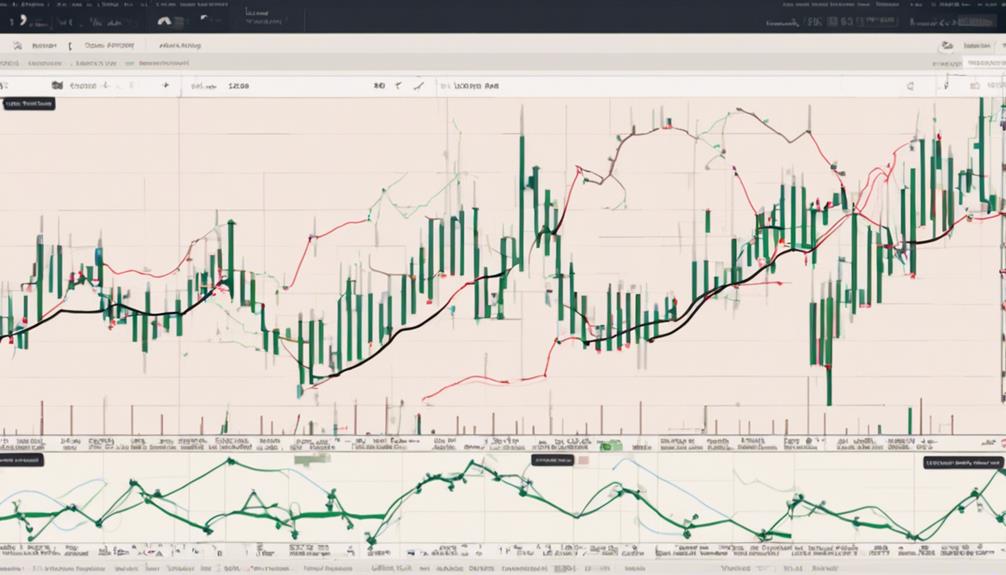
Understanding how volatility impacts trading strategies is essential for traders seeking to navigate the complexities of financial markets effectively. Volatility indicators play a crucial role in helping traders adapt their strategies and manage risks efficiently. By providing insights into market stability and potential price movements, these indicators enable traders to make informed decisions regarding entry and exit points. Moreover, volatility indicators reflect market sentiment, aiding traders in anticipating breakouts or reversals.
Traders who grasp the significance of volatility on trading strategies can enhance their performance and decision-making processes. Utilizing volatility indicators not only assists in identifying optimal entry and exit points but also in adjusting strategies based on the prevailing market conditions. By incorporating volatility analysis into their trading strategies, traders can better position themselves to capitalize on opportunities and mitigate potential risks associated with market fluctuations. Overall, a thorough understanding of how volatility influences trading strategies is vital for achieving success in the dynamic world of financial markets.
Interpreting Volatility Indicator Data
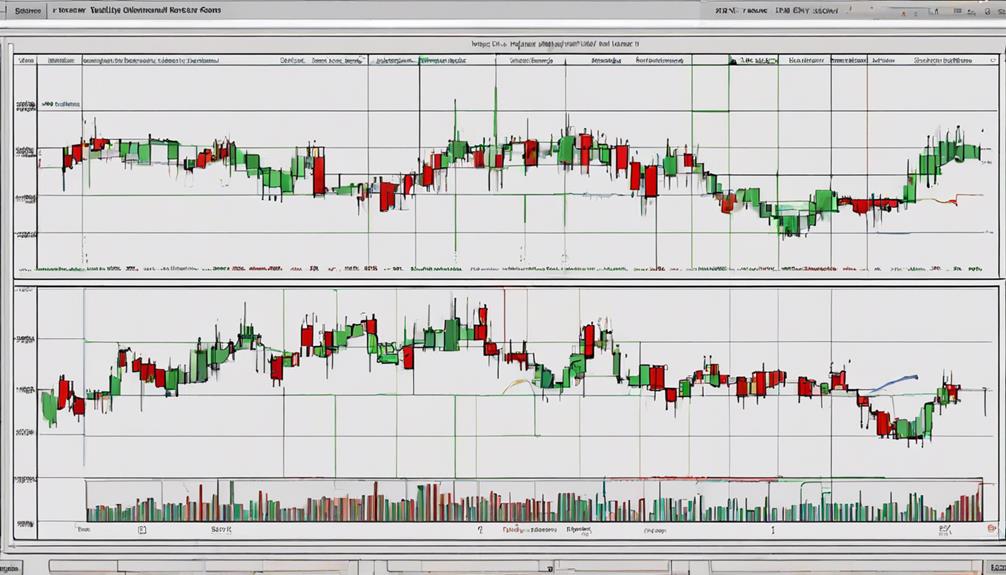
Given the pivotal role that volatility indicators play in adapting trading strategies and managing risks efficiently, interpreting volatility indicator data is crucial for traders seeking to optimize their decision-making processes in financial markets.
Volatility indicators like Bollinger Bands and Average True Range (ATR) help traders gauge market volatility and adjust risk management strategies. Understanding volatility indicator data can assist in identifying optimal entry and exit points for trades. These indicators reflect market sentiment and help traders anticipate potential price breakouts or reversals.
By analyzing volatility indicator data, traders can make informed decisions based on the level of price fluctuations and trend strength. Effective interpretation of volatility indicators can enhance trading performance and lead to improved timing of trade executions.
Through careful data analysis and interpretation, traders can make better decisions in volatile market conditions, ultimately improving their overall trading outcomes.
Utilizing Volatility Indicators Effectively
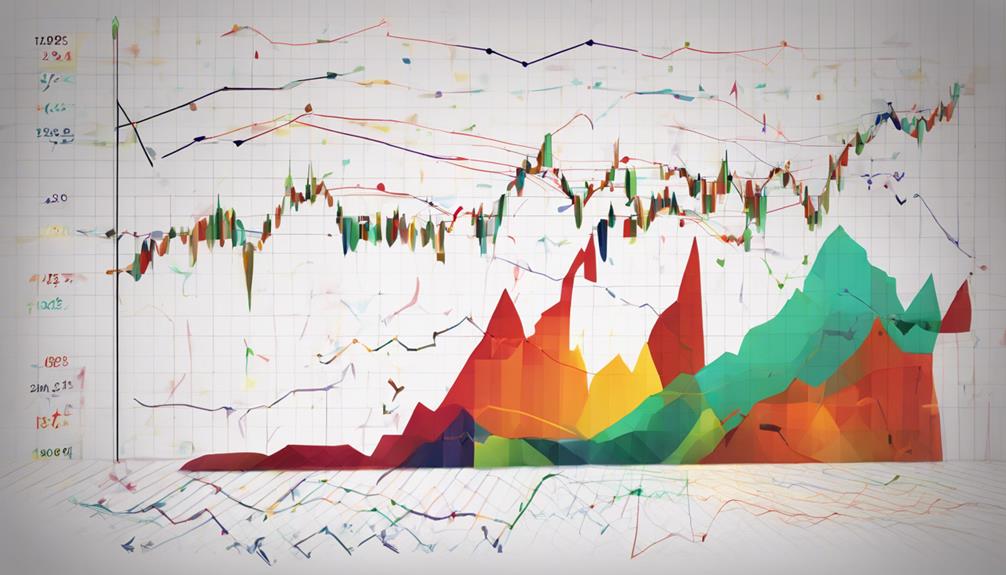
To effectively utilize volatility indicators, traders must first interpret data accurately to understand market conditions. Timing entry and exit points based on the indicators can help maximize profits and minimize losses.
Adjusting risk management strategies in response to volatility levels is crucial for maintaining a balanced and successful trading approach.
Interpret Data Accurately
Utilizing volatility indicators effectively enhances the accuracy of data interpretation in financial analysis. When interpreting data with volatility indicators, it is crucial to consider the following:
- Price Volatility: Understanding how volatility indicators measure price fluctuations aids in assessing the level of risk associated with potential breakouts.
- Stop-loss Orders: By utilizing indicators like Average True Range (ATR), setting stop-loss orders becomes more precise based on the actual volatility in price movements.
- Market Sentiment: Volatility indicators, such as the Volatility Index (VIX), provide insights into market sentiment, helping anticipate shifts in volatility levels and potential market movements.
Timing Entry and Exit
Effective utilization of volatility indicators plays a pivotal role in guiding traders towards optimal timing for entry and exit points in financial markets.
Bollinger Bands are instrumental in identifying potential breakouts and reversals, aiding in strategic decision-making for entry and exit.
Average True Range (ATR) assists traders in setting appropriate stop-loss orders based on market volatility levels.
Keltner Channels offer insights into trend identification and potential breakout points, enhancing the trader's ability to time their entries and exits effectively.
Similarly, Donchian Channels track support and resistance levels, aiding in determining optimal price movements for entry and exit strategies.
Adjust Risk Management
Incorporating volatility indicators into risk management strategies is essential for traders aiming to optimize stop-loss levels and effectively manage risk in financial markets. By adjusting risk management based on volatility indicators, traders can identify optimal entry and exit points, enhancing trade timing.
Additionally, these indicators offer insights into market sentiment, enabling traders to adjust their strategies accordingly. Utilizing volatility indicators helps traders to identify trends, reversals, and potential breakouts in the market, facilitating informed decision-making.
Adapting trading strategies based on current volatility levels can significantly improve overall trading performance. By incorporating these indicators effectively, traders can navigate the market with greater precision and confidence.
Incorporating Volatility Indicators in Analysis
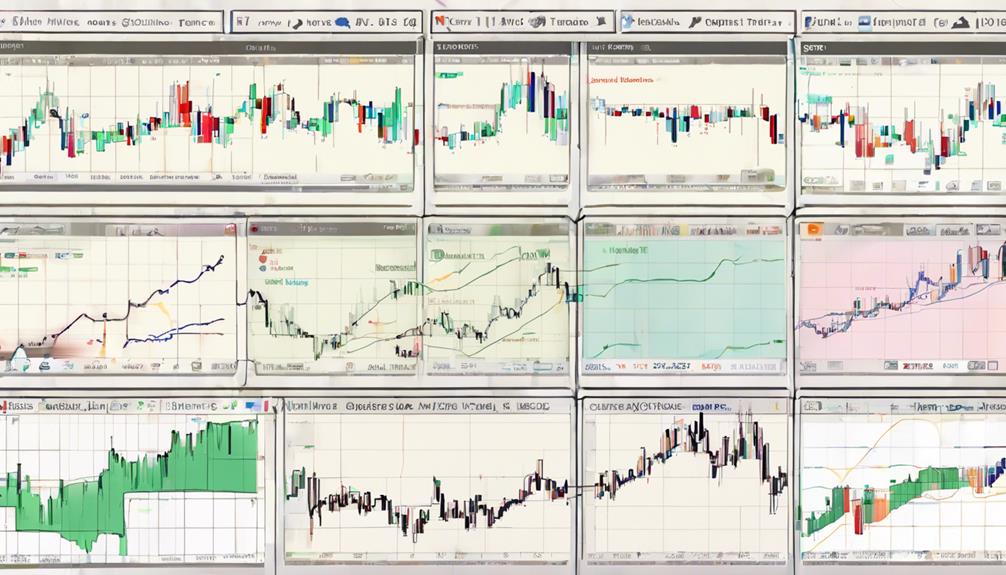
When analyzing market trends, the inclusion of volatility indicators such as Bollinger Bands and Average True Range can provide valuable insights into price movements and assist in strategy adjustments. These indicators are based on specific calculations that enable traders to identify the level of volatility in a particular market.
For instance, Bollinger Bands consist of a moving average line and two standard deviation lines, helping traders identify potential breakout points and overbought or oversold conditions. On the other hand, the Average True Range indicator measures the average range between high and low prices, indicating the level of volatility in the market.
Incorporating other volatility indicators like Keltner Channels and Donchian Channels can further assist traders in trend identification and identifying potential breakout signals. Traders can use these indicators to confirm trends and make informed decisions based on the volatility present in the market. By utilizing a combination of these specific volatility indicators, traders can enhance their analysis and make more informed trading decisions.
Benefits of Monitoring Volatility Indicators
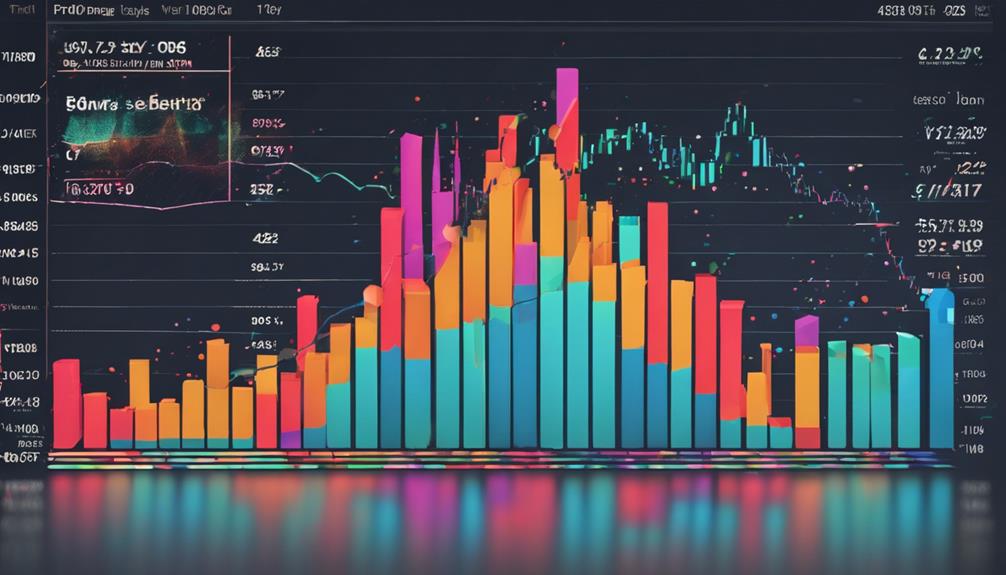
Monitoring volatility indicators offers traders a significant edge in enhancing risk management strategies by providing a clearer understanding of market dynamics.
Additionally, these indicators play a crucial role in predicting market trends, assisting traders in making well-informed decisions.
Enhanced Risk Management
Utilizing volatility indicators in risk management strategies is essential for traders seeking to enhance their decision-making processes and improve overall performance. By incorporating these indicators into their analysis, traders can effectively manage risks and capitalize on market movements.
Some key benefits of integrating volatility indicators into risk management practices include:
- Setting appropriate stop-loss orders to manage risk effectively.
- Adjusting position sizes based on market volatility levels.
- Identifying potential breakouts and reversals for timely entry and exit points.
These actions enable traders to anticipate market movements, fine-tune their strategies, and make more informed trading decisions, ultimately leading to improved performance and risk mitigation.
Market Trend Prediction
By incorporating volatility indicators into market analysis, traders gain valuable insights for predicting trends and optimizing their trading strategies. Monitoring volatility indicators helps in forecasting market trends by identifying potential breakouts and reversals. Understanding these indicators enables traders to anticipate price movements, adjust strategies accordingly, and make informed trading decisions based on market sentiment.
Additionally, volatility indicators assist in setting appropriate stop-loss levels for effective risk management in volatile markets. Traders can utilize these indicators to spot optimal entry and exit points, aligning their trades with market volatility levels. This proactive approach to market trend prediction enhances traders' abilities to navigate volatile conditions and capitalize on opportunities effectively.
Trading Strategy Optimization
In the realm of trading strategy optimization, the integration of volatility indicators plays a pivotal role in enhancing decision-making processes and trade execution. Monitoring volatility indicators in stock market investing offers significant benefits, such as:
- Utilizing the Chaikin Volatility Indicator or Relative Volatility Index (RVI) can provide insights into market stability and potential price movements.
- Historical Volatility analysis helps traders adjust risk management strategies based on current market volatility levels.
- Understanding implied volatility aids in identifying optimal entry and exit points, improving trade timing and execution.
Implementing Volatility Insights in Trading
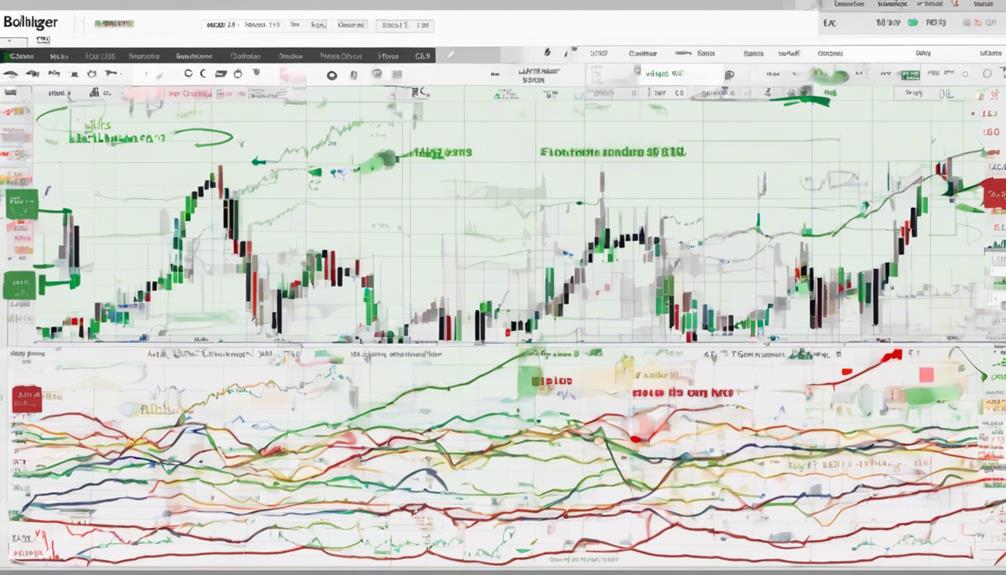
Implementing volatility insights in trading is essential for making informed decisions and maximizing potential profits in the financial markets.
By incorporating various volatility indicators such as Bollinger Bands, Average True Range (ATR), Volatility Index (VIX), Keltner Channels, and Donchian Channels, traders can effectively analyze price fluctuations and market trends to identify potential opportunities for their investment strategy.
Bollinger Bands assist in recognizing price volatility and potential breakouts, while ATR helps measure price movement volatility and set appropriate stop-loss orders. The VIX provides insights into market sentiment and helps anticipate shifts in volatility levels.
Keltner Channels aid in determining trends and potential reversals by assessing volatility levels. Additionally, Donchian Channels are valuable for tracking support and resistance levels, as well as identifying breakout opportunities based on volatility patterns.
Maximizing Profits With Volatility Indicators
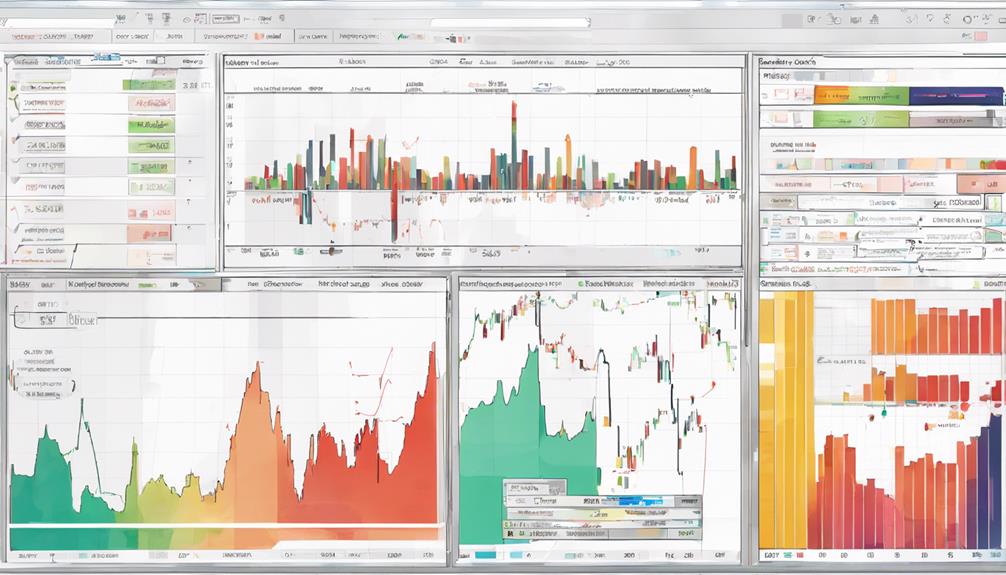
Maximizing profits through the strategic utilization of volatility indicators is crucial in optimizing trading performance and capitalizing on market opportunities. Volatility indicators enable traders to identify potential opportunities by measuring the difference in price fluctuations. When combined with other technical analysis tools, these indicators can assist in managing risk by setting appropriate stop-loss orders based on support and resistance levels.
To maximize profits, traders should consider the following:
- Lower values of volatility indicators can indicate a period of consolidation or low market activity, potentially signaling a trend reversal.
- Utilizing volatility indicators can help traders anticipate breakouts and reversals, allowing for timely entry and exit points to capture profit.
- Adjusting trading strategies based on volatility insights can lead to enhanced profit potential and improved trade performance.
Long-Term Value of Volatility Analysis
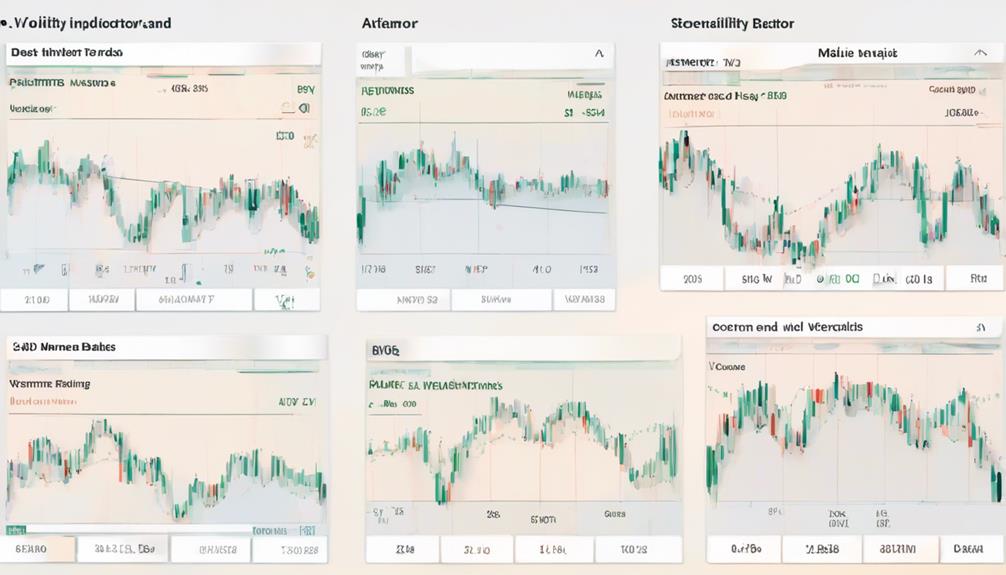
Understanding the long-term implications of volatility analysis is essential for investors seeking to gain insights into market sentiment, trends, and potential opportunities for maximizing returns.
By using volatility indicators, investors can make informed decisions based on past price fluctuations. The analysis reveals potential price movements, helping traders anticipate market uncertainties and adjust their strategies accordingly.
For example, the Chaikin Volatility Indicator suggests the degree of price volatility, which can lower the risk of unexpected price swings and lead to more calculated trading decisions.
Additionally, utilizing channels can help identify trends, breakouts, and reversals, offering valuable information for optimizing entry and exit points.
The long-term value of volatility analysis lies in its ability to provide a comprehensive understanding of market dynamics, enabling investors to navigate fluctuations effectively and capitalize on potential opportunities for long-term gains.
What Are the Most Important Volatility Indicators to Utilize?
When incorporating utilizing volatility indicators tips into your trading strategy, it’s crucial to focus on the most important indicators. The Average True Range (ATR), Bollinger Bands, and the VIX are key tools to assess market volatility and make informed decisions. Mastering these indicators can greatly enhance trading outcomes.
Frequently Asked Questions
Why Is Measuring Volatility Important?
Measuring volatility is crucial for traders as it provides insights into potential price movements, aids in risk management through setting stop-loss orders, and helps identify optimal entry and exit points. Understanding volatility assists in making informed trading decisions.
What Is the Importance of Volatility Index?
The Volatility Index (VIX) is crucial for traders as it provides insights into market sentiment and potential price movements. Understanding the VIX helps traders adjust risk management strategies, assess options pricing, and make informed decisions amidst fluctuating market conditions.
What Is the Best Indicator to Detect Volatility?
To effectively detect volatility in markets, the Average True Range (ATR) stands out as a reliable indicator. Its ability to measure price range fluctuations provides traders with valuable insights into market volatility, making it a standout tool for risk assessment.
Why Should We Care About Volatility?
Understanding volatility is essential as it impacts asset prices, risk levels, and trading strategies. Traders should care about volatility to anticipate market movements, adjust positions, set risk management measures, and optimize trade timing effectively.
Conclusion
In the grand symphony of trading, volatility indicators serve as the conductor guiding traders through the ever-changing market landscape. Like a compass in a stormy sea, these indicators provide direction and clarity amidst uncertainty.
By heeding their signals and incorporating them into trading strategies, traders can navigate the turbulent waters of the financial markets with confidence and precision. Embracing the importance of volatility indicators is not just a choice, but a necessity for those seeking success in the world of trading.


